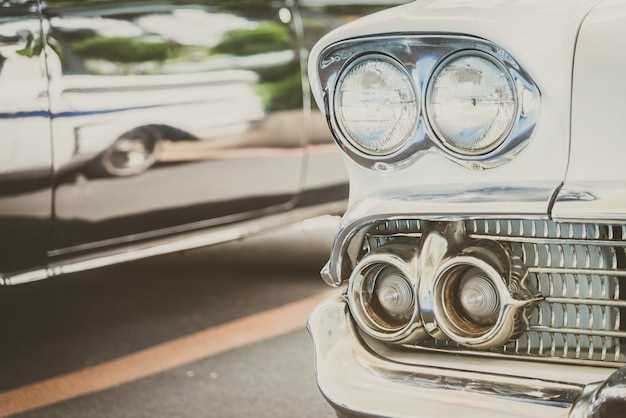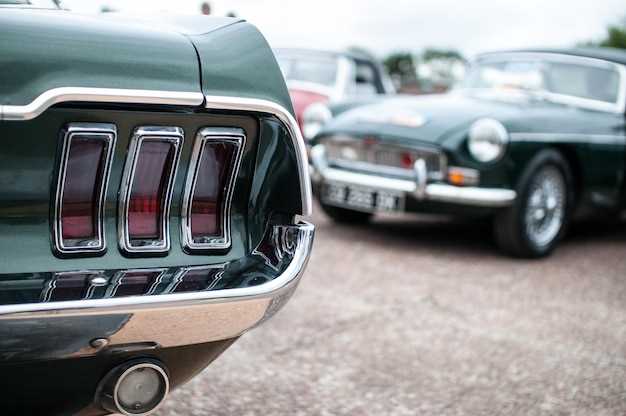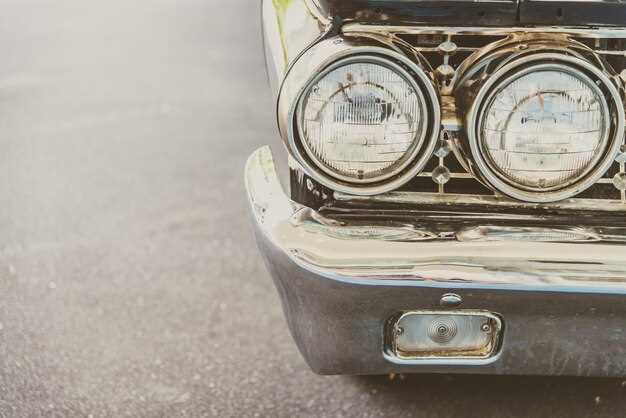
In the world of classic cars, enthusiasts often explore the concept of engine swaps as a way to enhance performance and modernize their cherished vehicles. Whether for improved horsepower, better fuel efficiency, or simply to breathe new life into an aging classic, the process brings both excitement and challenges. Understanding the intricacies of engine compatibility is crucial for those considering this modification.
One of the primary advantages of an engine swap is the potential for significant performance upgrades. Newer engines typically come equipped with advanced technology, such as fuel injection and turbocharging, which can vastly improve both the horsepower and torque output. Additionally, modern engines are often designed with better fuel efficiency in mind, allowing classic car owners to enjoy their vehicles while reducing the impact on their wallets and the environment.
However, the journey of swapping an engine is not without its drawbacks. Compatibility issues can arise when integrating a new engine into an older chassis, leading to complications in installation, transmission compatibility, and even electrical system adjustments. It is essential to consider these factors thoroughly, as a poorly executed swap may detract from the classic aesthetics and value of the vehicle.
In this article, we will delve into the multifaceted nature of engine swaps in classic cars, highlighting both the benefits and the drawbacks. By weighing these factors, car enthusiasts can make informed decisions that align with their goals, whether they seek performance enhancements or wish to maintain the integrity of their classic rides.
Engine Swaps in Classic Cars: Benefits and Drawbacks
Engine swaps in classic cars offer both opportunities and challenges for enthusiasts and restorers. Below are the key benefits and drawbacks associated with performing an engine swap.
Benefits

- Improved Performance: Swapping an outdated engine with a modern variant can significantly enhance horsepower and torque, leading to better acceleration and overall driving experience.
- Reliability: Newer engines are often designed with improved technology and materials, resulting in increased durability and lower maintenance needs.
- Fuel Efficiency: Engine swaps can introduce fuel-efficient designs, reducing the vehicle’s overall fuel consumption and emissions.
- Customization: Engine swaps provide the opportunity to modify the car’s character, allowing owners to tailor performance and aesthetics to their preferences.
- Parts Availability: Modern engines typically have a much wider availability of parts, making repairs and maintenance more manageable.
Drawbacks
- Cost: Engine swaps can be expensive due to labor, additional parts, and potential modifications needed for fitment and compatibility.
- Complexity: The process of swapping engines can be intricate, requiring extensive knowledge and skill, which may not be accessible to all enthusiasts.
- Legal and Regulatory Issues: Engine swaps may require adherence to legal regulations and emissions standards, which could complicate the process.
- Impact on Originality: Swapping the original engine can detract from a vehicle’s originality, potentially reducing its value among collectors and purists.
- Integration Challenges: New engines might require adjustments to the electrical system, transmission, and exhaust, complicating the overall installation process.
Each classic car owner must weigh these benefits and drawbacks to determine if an engine swap aligns with their goals and vision for their vehicle.
Evaluating Performance Gains with Modern Engine Swaps
Modern engine swaps can significantly enhance the performance of classic cars, making them more powerful and efficient. One of the primary benefits of these swaps is the compatibility of modern engines with advanced technologies, such as fuel injection, variable valve timing, and turbocharging. These features not only boost horsepower and torque but also improve fuel efficiency compared to older engine designs.
When evaluating performance gains, it is essential to consider the weight-to-power ratio. Many modern engines, particularly smaller turbocharged variants, can deliver high levels of power while maintaining a lighter overall weight. This shift can drastically improve acceleration and handling dynamics in vehicles originally designed for heavier, less powerful engines.
Another advantage of modern engine swaps is the ease of obtaining replacement parts and the availability of upgraded components. This ongoing support can lead to longer-lasting performance and lower maintenance costs. Furthermore, integrating state-of-the-art engine management systems allows for precise tuning, enhancing reliability and drivability, which is often a challenge with classic powerplants.
However, it is crucial to acknowledge potential drawbacks. Ensuring compatibility between the new engine and the car’s existing systems–such as transmission, cooling, and electrical systems–can require additional modifications. This process can be complex and may deter some enthusiasts concerned about preserving the vehicle’s original character.
In conclusion, while modern engine swaps offer substantial performance gains, the decision to undertake such a project necessitates a careful assessment of compatibility and potential modifications. A well-executed swap can breathe new life into a classic car, making it more enjoyable to drive while retaining its timeless appeal.
Assessing Compatibility: Which Engines Fit Your Classic Car?

When considering an engine swap for your classic car, assessing compatibility is crucial to ensure optimal performance and reliability. The first step is to identify the original engine specifications, including size, weight, and mounting points. This knowledge helps in selecting a compatible replacement engine that fits within the existing engine bay without extensive modifications.
Another important factor to evaluate is the drivetrain configuration. Whether your classic car has a rear-wheel drive, front-wheel drive, or all-wheel drive system will influence which engines can be swapped in. Aligning engine and transmission types is essential for seamless integration, as mismatched setups can lead to significant issues.
Additionally, consider the weight of the new engine. A heavier engine may alter the car’s handling dynamics, affecting balance and braking performance. Researching engines that are known for their compatibility with your specific make and model can simplify the selection process, as certain engine families are popular for swaps due to their ease of installation and performance potential.
Don’t overlook electrical compatibility and necessary modifications to the fuel system. Certain engine swaps may require upgrades to wiring harnesses or fuel delivery systems to ensure proper operation. Understanding the needs of both the engine and car will guide you in making informed decisions for a successful swap.
Ultimately, the choice of engine should not only focus on power output but also on how well it complements your classic car’s overall design and driving experience. Engaging with fellow enthusiasts, forums, and professionals can provide valuable insights into successful swaps and best practices for compatibility.
Legal and Insurance Implications of Engine Swapping
When considering an engine swap for a classic car, it’s essential to understand the legal and insurance implications that may arise. Each jurisdiction has its own laws governing vehicle modifications, and failing to comply with these regulations can lead to fines or vehicle registration issues.
First, ensure that the engine swap adheres to local emissions standards. Many regions require modified vehicles to pass emissions testing, and installing a newer engine that meets these standards may be necessary. Additionally, some states or countries have specific laws regarding the type of engine that can be swapped, particularly if you’re moving to a higher displacement or different fuel type.
Another critical aspect to consider is vehicle registration. Depending on the laws in your area, you may need to inform your local Department of Motor Vehicles (DMV) about the engine change. This process may involve updating your vehicle’s title and registration to reflect the new engine’s specifications, which is crucial for legality and future resale value.
From an insurance perspective, engine swapping can complicate your coverage. Many insurance policies require you to disclose significant modifications, including an engine swap. Failing to report this change can lead to denied claims or even policy cancellation in the event of an accident. It’s advisable to consult with your insurance provider to understand how an engine swap might affect your premiums and coverage options.
Furthermore, modifications can potentially alter your vehicle’s classification, which may affect your insurance premiums. For instance, high-performance engines can lead to higher insurance costs due to increased risk factors. Discussing these implications with your insurer before proceeding with an engine swap will help you avoid any surprises down the line.
In conclusion, while engine swapping can enhance the performance and enjoyment of a classic car, it comes with important legal and insurance responsibilities. Being informed and proactive about these aspects will ensure a smooth transition and peace of mind throughout your classic car modification journey.
